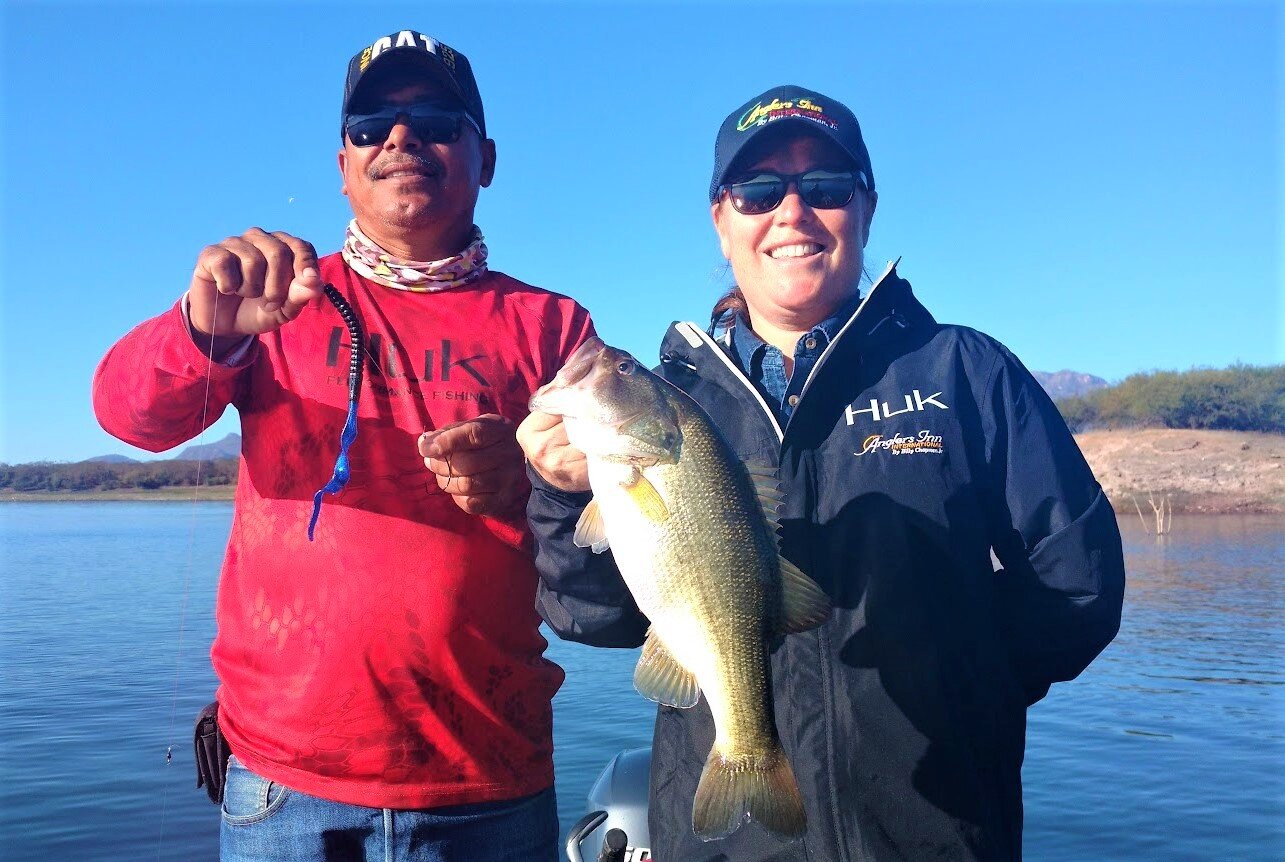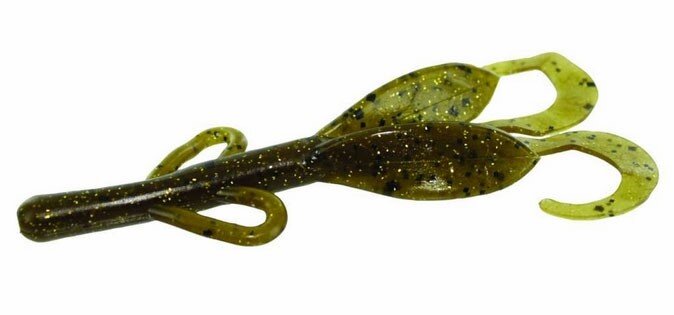Carolina Rigging for Lobinas Grandes in Mexico
Despite being one of the best ways to consistently catch giant bass in Mexico — through all seasons and all water levels — Carolina Rigging almost cost me my marriage. My wife loves it, I hate it. We’ve had a few disagreements in the boat about whether we should stick with it or turn to some other tactic.
I don’t quite consider it the “quitter’s rig,” but if there’s something else going on I’d rather be doing that other thing. At times fishing it feels like watching paint dry, and when you break off it takes a long time to retie properly, another strike against it.
At the same time, I’m honest enough to know that it can produce big fish and a lot of fish. There have been several times, particularly at Lake El Salto, where we’ve been able to catch a few fish offshore on crankbaits, football jigs or Texas Rigs, while a Carolina Rig seemed to get bit on almost every cast. With that in mind, I’ll rarely have one tied up at the start of the day or the start of a fishing session, but I always keep the components in the boat ready to go.
LINE FOR CAROLINA RIGGING IN MEXICO
My strategies for C-Rigging probably aren’t entirely conventional, specifically the fact that in Mexico I usually use a 50-pound braid main line with a 17- or 20-pound test fluorocarbon leader. That’s heavier than what I use at home (and I don’t use the braid in Virginia), but I feel like I’m more likely to be around big fish and heavy cover South of the Border and the tradeoffs are worth it. If you’re fishing around rock—and there’s plenty of it on the Mexican lakes—be sure to check your braid for fraying regularly.
PICKING THE PROPER TERMINAL TACKLE
Beyond that, my beads, swivel and terminal tackle are fairly similar to what I’d use elsewhere. Years ago in the pre-tungsten era, I used to get inexpensive ¾ and 1 ounce cylindrical lead weights from Bass Pro Shops. They snaked through cover and if I broke them off it was no great loss. I left a box of them in my Mexican tackle supply and the heat took its toll on them. The holes in the middle shrunk. I suppose I could have taken a spinnerbait wire to reopen them, but that might have left the weights with some rough edges. It wasn’t worth the risk of a lost giant fish. That gave me a clean break to convert exclusively to tungsten and I haven’t looked back. Yes, they’re more expensive and it’s painful to lose one, but the Anglers Inn guides are good at getting them back and the increased sensitivity is worth the extra cash.
BIG RODS FOR DRAGGING BIG WEIGHTS
Historically I fished the Carolina Rig on a G.Loomis IMX 844c, but that just feels a little bit too short and too light for me now. The rod amongst my permanent stash down there that I’ve turned to is a Dobyns Champion DC 764C, which is 7’6” and heavier. On occasion I’ve also used a Champion XP 765FLIP, which is the same length but a fair amount heavier. Make sure that your reel has plenty of line capacity because when fishing with the wind you’ll be able to make exceptionally long casts, and don’t use anything slower than a 7:1 gear ratio. That’ll help you catch up to fish that may pick up your lure and move toward you.
SOFT PLASTICS THAT DRAW BIGGER BASS BITES
You may have your own preferred line choice and tackle for dragging the ball-and-chain, but you’ll be limited on the number of baits you can bring. The following is the list of specifics that have worked best for us.
Zoom 8-inch lizard – This is the standard by which all C-Rig (and Texas Rig, for that matter) soft plastics are measured for both quality and quantities of Mexican bass. It worked when the lakes first opened and it’ll work until the end of time. Get some in Watermelon Red or Green Pumpkin and be sure to dip the tail in chartreuse dipping dye or your guide will never trust you again.
Berkley 10-inch Power Worm – To be completely honest, Hanna and I probably C-Rig this worm more than we fish the lizard. We own several colors, but Black with a Blue Tail is our confidence bait, with blue fleck a close second.
Zoom Full-Sized Brush Hog – I like this choice, usually in some form of Green Pumpkin (with the tail dipped, DUH) more than the lizard. Not sure why. They just seem to get it deeper in their throat on the first swipe.
Reaction Innovations Skinny Dipper – I never would have considered a Hematoma or Penetration Dipper as fodder for a C-Rig, but several of the guides turned me onto it. Some also use it on a Texas Rig. There must be something about the way it darts but I don’t question the success. Most of them dip the tail chartreuse, even on the black/blue lures. I don’t quite get it, but I just go with the flow
That’s basically it. I don’t see a need to overcomplicate things until you show me that something works markedly better in certain circumstances. Nevertheless, I’d be remiss if I didn’t share that there are also some lures that are super-popular for dragging down there that we haven’t used successfully. Chief among these is the Zoom Magnum Fluke in Watermelon with Red Flake.
Even though dropshotting has stolen some of C-Rigging’s thunder for us in Mexico in recent years, I’ve never seen any reason to downsize my cannonballing baits at El Salto or Picachos. At home, I’ve primarily relied on a 6-inch lizard, a French Fry style bait and occasionally a small flapping craw at times. You might want to try these in Mexico, but I just don’t see the reason. A 2-pounder will eat a 10- or 12-inch worm, and it just seems more likely to attract a giant, which is what you’re there to catch.
NOTES ON C-RIGGING FOR LOBINAS GRANDES
The rod and leaders are long, the boats are smaller than what we fish out of at home, and Hanna and I usually both cast from the front deck. Be mindful of where your partner and your guide are at all times. You can seriously injure someone with that big weight or with a hook in the head
Bring a dedicated spool of fluorocarbon in the boat so you don’t have to cannibalize another reel for replacement leaders. While you can leave most of your tackle in the boat, take this spool back between sessions to avoid the line getting damaged or warped.
When you get in the “juice” on an otherwise featureless area, shake the hell out of your bait in place. Try to keep the sinker pegged to the bottom and the lure moving, if that makes sense. These fish are typically aggressive, but sometimes it takes a little taunting to get big mama to chew.
Finally, if your wife wants to Carolina Rig, don’t resist. It may save your marriage and put a giant or three in the boat.








